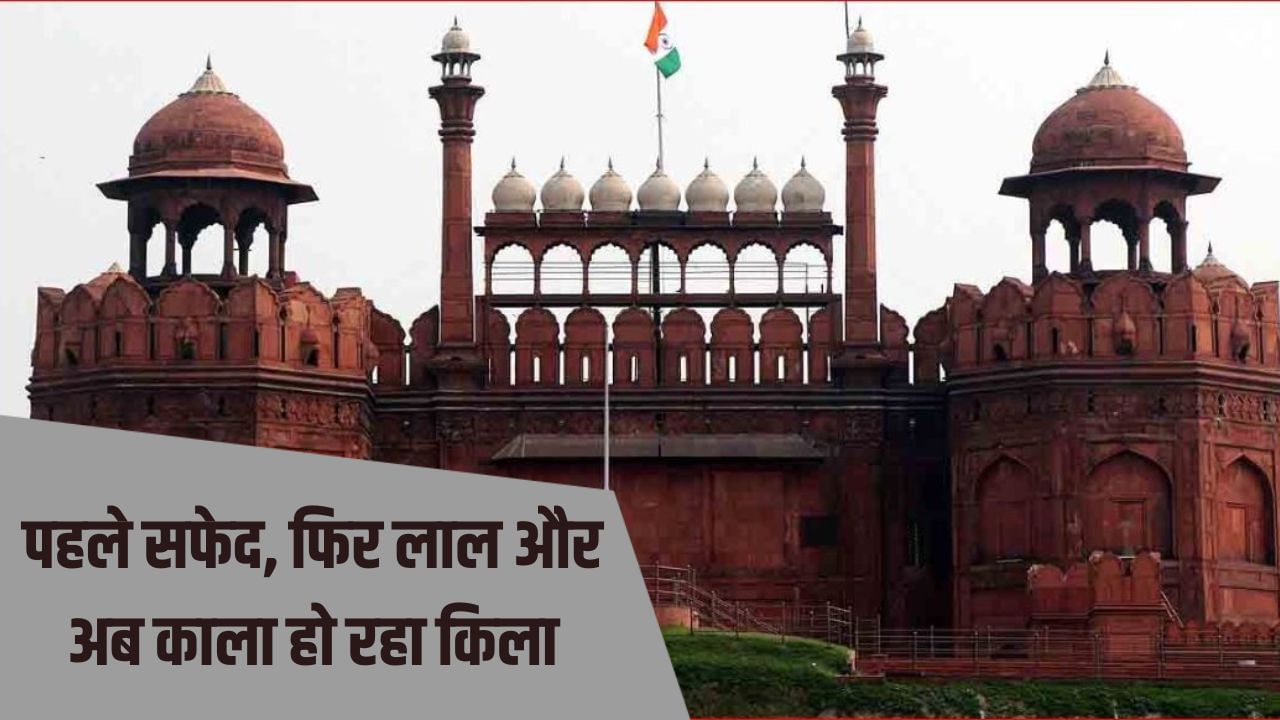Shah Jahan’s Red Fort.
Laal queila delhi: Shah Jahan’s Red Fort is one of the historical heritage of Delhi. It was declared a World Heritage Site by UNESCO in 2007. Thousands of tourists keep coming here to visit the Red Fort every day. But now this red fort is becoming black. That is, its color is changing. The reason behind this has also been revealed. A joint India-Italian study has found that the color of the fort is turning black due to pollution in the capital Delhi.
According to the study, poisonous pollutants are making “black layers” on the walls of the monument, which is threatening both its beauty and structure. Scientists have found that the specific red sandstone of this monument is slowly turning black due to the chemical reaction caused by pollutants present in the air.
A joint study by Indian and Italian researchers has shown that ‘black layers’ are being formed on the surface of the fort. That means gypsum, quartz. Layers of pollution deposition are being made with heavy metals like lead, copper and zinc. These layers are not only darkening the walls, but are also rubbing stones. This threatens the long -term stability of the monument.
55 to 500 micrometer thick layers were made
Published between 2021 and 2023 and published in the Heritage Journal in June 2025, this study is the first detailed test of the chemical effect of air pollution on the Red Fort. Scientists collected samples of walls from different parts of the monument and compared them to Delhi’s air quality data. Their findings showed that 55 to 500 micrometer thick layers have developed on the surface of the fort’s red sandstone. They are made of gypsum, baisanite and vedelight.
However, the Red Fort of Delhi was once white. When Shah Jahan built it in the 17th century, the fort was white in color as it was mainly made from white lime. But later the British painted it with red color.
Other historical sites also threatened
Experts have warned that if pollution control is not found, then soon other historical sites of Delhi will also show its effect. Such as Humayun’s Tomb and Safdarjung’s Tomb etc.
Scientists gave these suggestions
However, reducing the overall air pollution of Delhi remains a long -term challenge. Scientists suggest that timely intervention can help protect the structure and form of the fort. The study states- The formation of a black layer is a progressive process that starts with a thin black layer, which can be removed without damaging the stone if he is treated early.
Researchers recommend regular maintenance and cleaning programs for high-risk parts of the fort and install stone-protective coatings to prevent new crusts. They argue that such conservation measures can slow down the erosion of the fort and preserve its specific red color for the coming generations.
